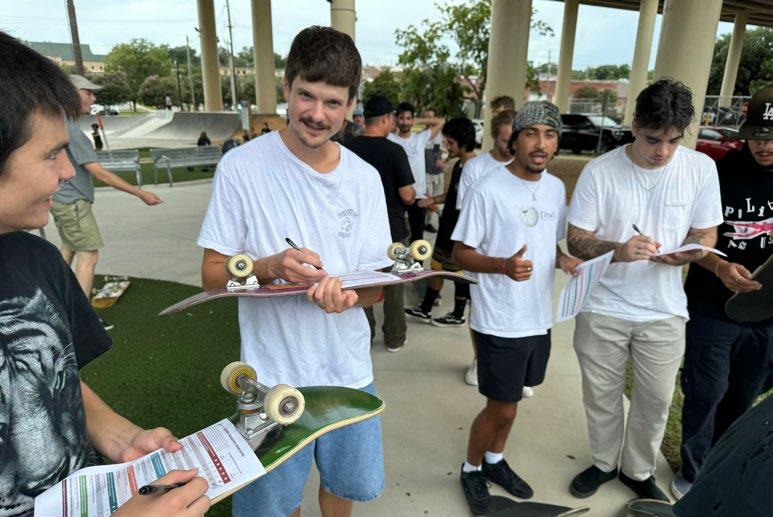

Hollic E t. Williams
storm Wat E r park
Pensacola, Florida | o ct. 25, 2024







Hollic E t. Williams
storm Wat E r park
Pensacola, Florida | o ct. 25, 2024




PREPARED FOR
Mayor Reeves City of Pensacola
FUNDED BY City of Pensacola
CONSULTANT TEAM
Urban Design Associates | Team Lead
James Lima Planning + Development | Economic Advisers
MonWin Consulting | Engagement and Planning
HDR Architecture | Transportation
FRIENDS OF HOLLICE T. WILLIAMS PARK
Anthony Williams
David Williams
DJ Williams
Gerald Williams
Larry Williams
Sabrina Williams
Rusty Branch
Teniade Broughton
carlton charles
Mark Gottschalk
George Grace
Kevin Hagen
An Hayward
Bart Hudson
Zac Lane
Tommy Lyter
Michelle Macneil
Joseph Marshall
David Mayo
Melanie Nichols
Allison Patton
Jon Shell
Eddie Todd
christian Wagley
Tia Wallis
Tommy White
Tracy White
Jewel Winn
Doug Young

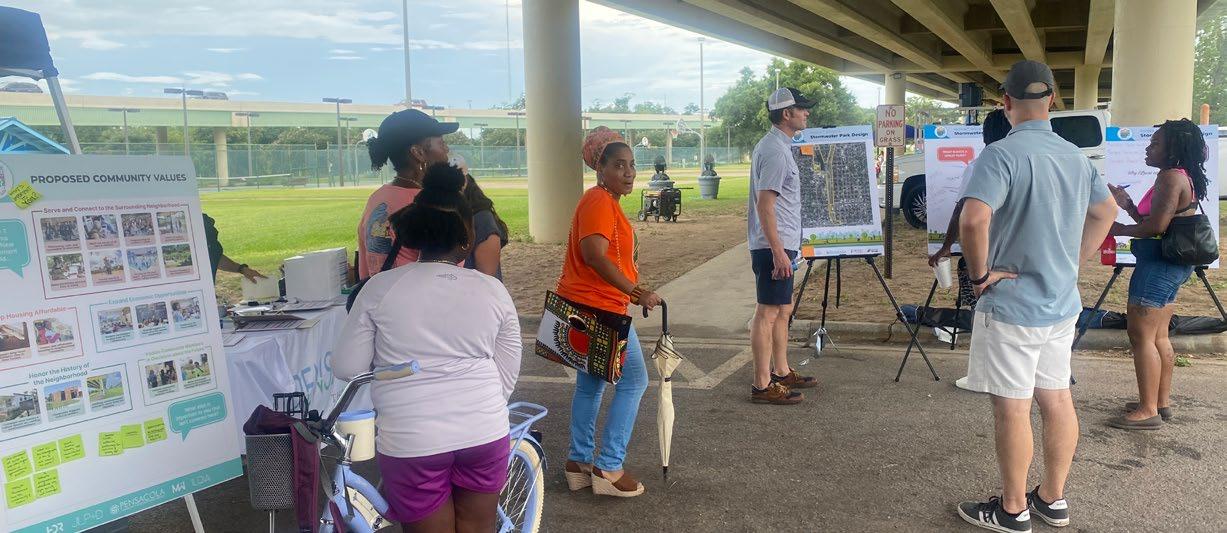

As the City of Pensacola invests $25 million in the first phase of enhancements to make Hollice T. Williams Stormwater
Park
a 1.3-mile long signature park, equity is a priority.
Hollice T. Williams Park is an important place in between the Eastside, Old East Hill, and North Hill neighborhoods. The Park is named after Hollice T. Williams, Sr., the first black man to be appointed to the Pensacola City Council and the first black man to become physical director of the YMCA.
The park was created on the land remaining under and around the I-110 overpass, between E. Maxwell Street to the north and E. Wright Street to the south. The highway was cut through a thriving Black and African American neighborhood in the 1970s, uprooting and displacing long-standing homes, churches, businesses, and residents. Residents hold strong memories of the Lost Neighborhood. Hollice T. Williams Park is a physical reminder of the impacts of structural racism in Pensacola.
The park currently includes standard amenities — basketball courts, benches, a pavilion, the Cecil T. Hunter Pool, tennis courts, and walking paths. It also includes other programming like the Blake Doyle Skatepark and the From the Ground Up Community Garden. The communities surrounding the park have been exploring enhancing Hollice T. Williams to serve as a signature park. Planning efforts took place in 2004, 2010–2014, and 2021.
At the same time, there is a growing need for stormwater enhancements to prevent flooding in the adjacent neighborhoods and downstream. In 2023, the City applied for and received a $25 million CDBG-DR grant and a $5 million NRDA grant to fund the first phase of park improvements, including stormwater upgrades. Additionally, the City applied for and received a $1.2 million TA grant to fund a multi-use trail.
In 2023, Mayor Reeves attended the MICD Just City Mayoral Fellowship to learn about equitable development and received a review of the 2021 Hollice T. Williams Stormwater Park plan refinement. As a result of this engagement, the Mayor committed to developing this Equitable Development Framework Plan, which will guide the development of the park and development within a 1/2-mile radius of the park. It was determined that most people would walk up to a 1/2 mile to a quality park. Furthermore, national research shows that economic impacts of parks extends up to 2,000 feet from the park, just under a 1/2 mile.



Hollice T. Williams Stormwater Park
Equitable Development Framework Plan Area

Westside CRA Area
Equitable Development Plan Area
Eastside CRA Area
Urban Core CRA Area

Neighborhoods within the Equitable Development Framework Plan Area
The community has been planning for Hollice T. Williams Park for two decades. The Equitable Development Framework Plan incorporated feedback and priorities from these previous planning efforts.
2004 Eastside Neighborhood Plan
The 2004 Eastside Neighborhood Plan began to explore enhancements to what was called “Central Park”. It laid out basic ideas for a passive park with safe walking and bicycling connections to the surrounding neighborhood. The Eastside Neighborhood Plan prioritized family-friendly amenities and ensured the park would serve users of all ages.
2010 Hollice T. Williams Greenway Framework Plan
In 2010, the surrounding neighborhoods participated in an inclusive process to more holistically imagine Hollice T. Williams Park. After extensive engagement, concept drawings for the park were developed, with prioritized amenities, including trails, community gardens, art that reflects the community, and gathering spaces for music, art, and cultural events.
2022 Hollice T. Williams Stormwater Park Plan Refinement
The purpose of the plan refinement effort was to confirm the desired park amenities and to develop a detailed plan that could be built. Residents and stakeholders did engage throughout this effort, but given the timing during the COVID-19 pandemic, the participation was not as broad as during the 2010 planning process. This is one of the reasons that additional engagement and design work is being pursued for the park concurrent with the Equitable Development Framework Plan.



Purpose
Develop the first drawing for Hollice T. Williams Park based on community input
Park design that included the amenities the community wanted to see
Purpose
Confirm the park amenities and turn the concept into a plan that could be built
More detailed design of the park to guide
Purpose Park was element of the neighborhood plan
Outcome basic ideas for passive park and connections to the neighborhood


Public restrooms at the tennis courts Family areas with playgrounds & seating
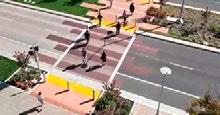
Safe walking connections to the neighborhood
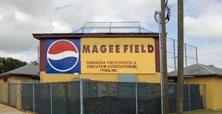
Enhancements to Magee Field (parking, concessions, restrooms)


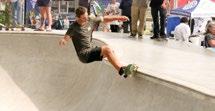



Original Park concept: Passive park with family-friendly amenities (picnic spaces, multi-use path with exercise stations)

Interactive areas for children
Extensive open areas



The Lost Neighborhood

• The area harmed by the construction of I-110 in the 70s, which uprooted and displaced a longstanding neighborhood of homes, churches, and businesses
• This effort is trying to repair the harm — by making sure new investments benefit everyone
Katherine A.
• Registered nurse and educator
• Coordinated the first nursing program for Black students at the Booker T. Washington Vocational School, which later became a model for the U.S. Navy
• Taught at Pensacola Junior College and was the first Black person to become President of the Florida Nurses Association District 1
• Honored as Nurse of the Year and Educator of the Year

Crystal Ice House
• Built in 1932 and open until 1950s
• Sold ice to the neighborhood before homes had refrigerators
Dr. A.S. Magee Field
• A talented and trusted surgeon who owned a pharmacy at Alcaniz and LaRua Streets
• Worked closely with other African American doctors and nurses
• Performed surgeries in people’s homes when Black doctors were not allowed to practice in hospitals during the early Jim Crow years

• Listed on the National Register of Historical Places


The history of the area around Hollice T. Williams Park is tied to the construction of I-110 in the 1970s. The construction of I-110 displaced the community that lived below the raised section of the roadway from Wright Street to Maxwell Street. The construction also threatened historic landmarks, including a live oak tree and St. Michael’s Cemetery, which contains graves dating back to the 1700s. Famous Pensacolians, such as Williams, John Sunday, Chappie James Jr., and Cecil T. Hunter, once called the neighborhood home. Historically significant structures bearing their names in the neighborhood include the John Sunday House, Chappie James Museum, and Dr. John Lee Pickens Medical Office.

H & O Cafe
• Originally a dry goods store owned by Tierce Lee, a wealthy Black businessman and his brother Shef
• The building was bought by their brother Hamp and his wife Ola in 1944 and converted to H & O Cafe
• The building was then purchased by the Grier family in 1947, who operated the cafe for more than 60 years
• H&O became an informal place for the African American community to gather & organize during the Civil Rights era
E.S. Cobb Center
• Dr. Eli Sanford Cobb was a Pensacola native
• He served in the U.S. Army during WWI and returned to Pensacola after the war to practice medicine
• Dr. Cobb loved sports and started 2 semi-pro teams: the Pensacola Seagulls baseball team and the Pensacola Giants football team

• They are acclaimed for their traditional southern style food and have been visited by many local and national celebrities and politicians
John Sunday
A war veteran who fought to end slavery and rebuild Pensacola after the Civil War
• Owned large areas of land and houses
• Donated his personal land to build St. Joseph’s Catholic Church, at the request of his sister Mercedes
• Was a member of the 1874 Florida Legislature
Spencer Bibbs Academy
• Established in 1919
• Spencer Bibbs was the first African American Supervisor of Colored Schools in Escambia County

• The Academy served students through 4th grade
• Spencer Bibbs would use his own wagon to transport students above the 4th grade to the west side, so that they could continue their education

• Served as a Pensacola alderman from 1878–1881 during Reconstruction
• Built a Creole School on Intendencia Street
General Daniel “Chappie” James Jr. Memorial Park
• Daniel “Chappie” James Jr. was the first African American four-star general, and one of America’s first Black military airmen
• He was a Tuskegee Airmen Pilot graduate who trained pilots for the famed all-Black 99th Pursuit Squadron
• “Chappie” James was awarded the Distinguished Service Medal, Legion of Merit, and the Distinguished Flying Cross
• He was born and raised in the Eastside neighborhood
Equitable development is a term that may be familiar to some in the planning and development industries, but it has the potential to cause confusion. City staff and the team developed common language to describe equitable development and this process in straightforward terms, to ensure that everyone understood the effort. The following descriptions were provided to community stakeholders and residents throughout the planning process.

• Development that minimizes negative impacts (like increasing rents and home prices).
• Development that is inclusive to everyone, especially long-time residents and businesses.
• Given the history of this area and the negative impacts of I-110, the City wants the Hollice T. Williams Stormwater Park improvements to have a positive impact.
• The City believes existing residents deserve to live in healthy, safe, amenity-rich neighborhoods that reflect their culture.
• Residents deserve to have opportunities for jobs and property & business ownership.
• Residents and stakeholders deserve to participate in the decision-making process about the park and surrounding development.

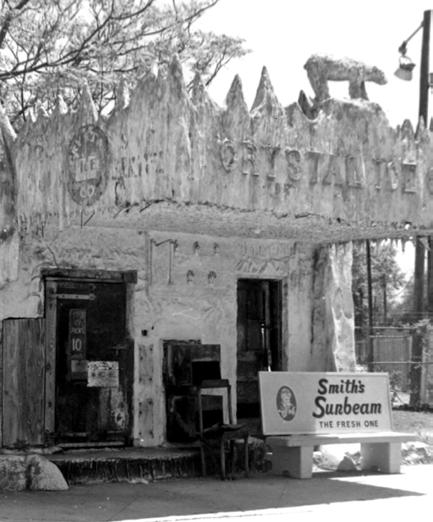


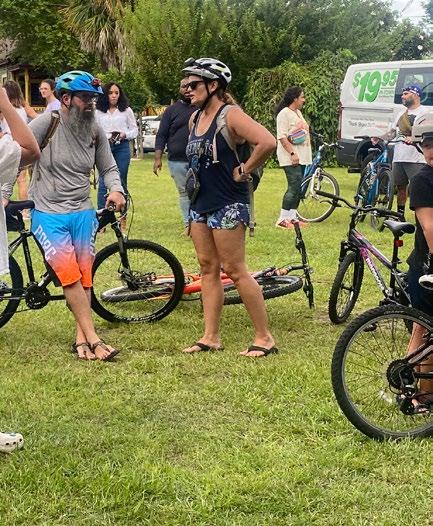
• A set of standards to ensure that future development in and around Hollice T. Williams Park benefits everyone.
• A set of shared values that represent the community’s priorities as the park evolves, and how land is developed around it.
• They will articulate the priorities of residents with regard to the design of Hollice T. Williams Park, including stormwater improvements.
• They will establish expectations for how development should impact the community surrounding the park (within a 1/2 mile).
• They will serve as criteria to help the City evaluate development projects seeking public funding or public approvals.
• They will serve as guidance for the City to decide the prioritization of funding for development projects and public improvements.
People understand that as improvements are made and development happens, the positive and negative impacts often aren’t felt equally by neighborhoods and individuals. To ensure participants understood the effort, the following definitions and common language were developed to describe gentrification, displacement, and economic growth. The communities surrounding Hollice T. Williams Stormwater Park are organized, active, and educated and wish to continue having an informed conversation about the positive and negative impacts.
Displacement is a force that relocates people from where they are living or running a business. Displacement can be either physical or economic, and often, it’s experienced as a slow building of pressure that leads to individuals making choices about whether to stay in a neighborhood or leave. Displacement might include:
• Newer housing stock being built, while older housing stock declines
• Rising costs for housing, services, and businesses
• Fluctuations in resident incomes
• Migration
Gentrification is the process of change in a neighborhood or community marked by increases in prices for basic needs, increased economic investments, and demographic or cultural shifts, often resulting in the displacement of residents or businesses. Gentrification can include:
• Social changes
• Economic changes
• Cultural changes
• Physical change in the built environment
Displacement and gentrification are related, but they are not entirely the same.
• Displacement is defined by the movement of residents and businesses. It is measurable. Oftentimes, it is seen in areas that are gentrifying, especially once the economic changes reach a tipping point.
• Gentrification is a process that creates the set of factors that lead residents and businesses to move, but it also causes other changes. Gentrification is multifaceted and much more complex to measure.

• Economic growth is positive for any community, especially for low-income communities. However, when that growth is not inclusive or accessible to certain groups, it is not equitable.
• Negative impacts of economic growth are often associated with gentrification, such as increasing rents and reduced affordability for existing residents.
• Equitable economic development aims to minimize the negative impacts of economic growth.


The City developed a process to invite the community within the 1/2-mile project area to guide the priorities and principles of the Equitable Development Framework Plan. The Mayor formed the Friends of Hollice T. Williams Park group to advise on both the design of the park and the Equitable Development Framework Plan. The engagement process followed three steps:
• Step 1: Listening
• Step 2: Exploring Priorities
• Step 3: Developing the Plan
A series of outreach events celebrated the current use and future possibilities for the park. In late July, the Party in the Park brought hundreds of people to Hollice T. Williams Park for local food vendors and trucks, a game of skate at the Blake Doyle Skatepark, a slow ride with Bike Pensacola, tours of the From the Ground Up Community Garden, an artist’s market, performances, and speeches by descendants of Hollice T. Williams and local historians knowledgable about the Lost Neighborhood. Over 330 people completed a survey expressing their priorities for making sure the design of the park and development around the park are equitable.
PREPARATION
• Friends of Hollice T. Williams Park June Meeting
SURVEY OPENS
• Simple paper & virtual survey focused on Equitable Development Principles and Values
OUTREACH
• Coordination with community leaders
• Eastside Association Meeting
• Outreach through community and senior centers
DEVELOPMENT OF PRINCIPLES & VALUES
SURVEY CLOSES
• Summary of community input through the survey and in-person events
PARTY IN THE PARK
JULY 26–27
• Friday evening Slow Ride
• Working Session with members of the Eastside Association
• Saturday Bash Under the Freeway
Which groups were engaged throughout the process?
Friends of Hollice T. Williams Park
Neighborhood Associations
Residents
Community Organizations Park Users
COUNCIL BRIEFING
• September 9 Council Agenda Review
SHARING
• Eastside Association review of Values and Principles
SHARING
• Friends of Hollice T. Williams
• Eastside Neighborhood Association
COUNCIL ADOPTION
• November 14 Council Meeting
• Equitable Development Framework Plan document


SATURDAY, JULY 27TH, 2024
Party in the Park — Bash Under the Freeway

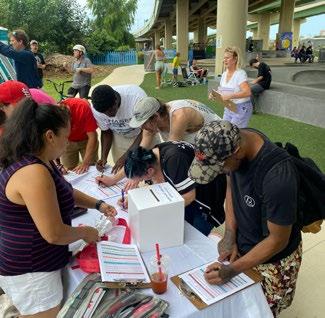

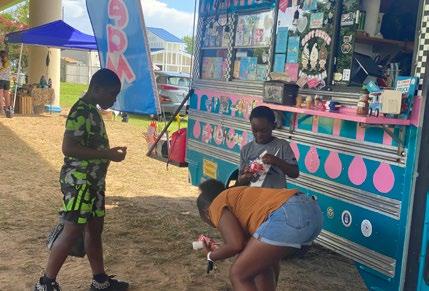
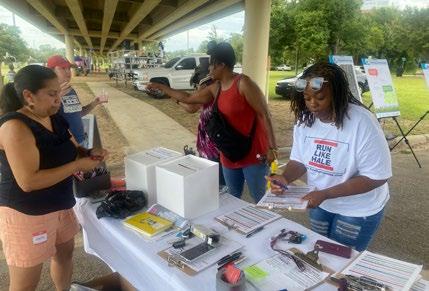
FRIDAY, JULY 26 TH , 2024
Party in the Park — Game of Skate and Slow Ride




» Be welcoming & safe to everyone
» Meet the needs of all ages & abilities
» Include community members in the decision-making process
» Create comfortable gathering spaces
» Create jobs for local residents
» Address and prevent flooding
» Provide programming for children and adults
» Celebrate local history & culture
» Create affordable housing
» Allow community members to help guide, program, & manage park use
The Community Equity Survey was offered in both hard copy form during events and in digital form accessible online. 335 individuals responded, sharing their priorities for the park and surrounding development. 94 individuals filled out the survey online, 142 people completed the survey during the Party in the Park events, and an additional 99 people completed the survey during smaller outreach events. The top 10 ranked community priorities (listed to the left) were used to inform the Equitable Development Values and Principles, along with conversations with key stakeholders, such as the Friends of Hollice T. Williams Park group and neighborhood associations.
Ensure the park and new development is welcoming and accessible to everyone.
1
2
3
Include design elements in the design of the park that recognize and celebrate the cultures of the people who live in the 1/2-mile radius around Hollice T. Williams Park.
Encourage, rather than discourage, people to spend time in the park, such as later park hours.
Implement a comprehensive protected walking and biking network within the 1/2-mile radius around Hollice T. Williams Park, which enables residents to safely commute to the park. This should be implemented by the City in alignment with the Active Transportation Plan.
Who would implement?
Public Sector
Public Sector
Public Sector
4
For projects seeking public funding or approvals within the 1/2-mile radius of Hollice T. Williams Park, development should be designed to be welcoming to the community by including public art, murals, transparent storefronts, pedestrian-oriented elements like benches, awnings, patios, landscaping and shade, and frequent street-facing entrances
Private Sector
The Values and Principles grew out of the input from the Equitable Development Framework Plan process. They are meant to stand as the guiding policy for development in and around Hollice T. Williams Park.
The examples listed under “How could this be accomplished?” are meant as possible actions, policies, programs, or incentives that would ensure the principles are carried out. They help provide a more concrete understanding of how this plan could be implemented. In many cases, these examples describe programs and policies that don’t exist yet. Not all examples will be implemented, and as the City continues to refine what’s possible, other strategies may be added.
Meet the needs of all ages & abilities.
How could this be accomplished?
1
2
Include park amenities that are engaging and interesting for all ages (ranging from early childhood to school-aged children, teens, young adults, and seniors).
Design the park and development within 1/2 mile of Hollice T. Williams Park seeking public funding or approvals to be accessible to all abilities (including those with different physical, mental, and emotional abilities). Examples could include accessible swings, ramps, transfer platforms, ground-level play features, wider pathways, smooth but slip-resistant surfaces, sensory elements, sound instruments, soothing colors, and textures.
Who would implement?
Public Sector
Public/Private Sector

Create comfortable gathering spaces.
How could this be accomplished?
1

Provide spaces in the park where community members can hold larger gatherings and celebrate special events with friends and family
Who would implement?
Public Sector
Make it simple and affordable for community organizations and residents to host events in the park.

How could this be accomplished? Who would implement?
1
2
Offer reduced or waived fees for community members for event permits; explore creative ways to lessen the requirements for insurance, road closures, security, etc.
Consider a City staff position to act as a community navigator or liaison, who could help residents navigate the permit application process.
Provide programming and recreational amenities that reflect the desires and needs of the surrounding community.
How could this be accomplished?
1
2
3
4
Design the park amenities, features, and programming to appeal to the existing residents of the surrounding neighborhoods.
Incorporate current and past community input about the needs and desires of the residents for park elements and programs.
Create a Program Plan for Hollice T. Williams Stormwater Park that encompasses the variety of programs, services, and activities.
Require developers working in the 1/2-mile radius of the park seeking public funding or approvals to make an intentional effort to lease ground floor space at an affordable rate to businesses that serve the existing community’s interests and needs (prevent changing the dynamic and culture of the neighborhood by only appealing to outside customers). The City could examine the potential incentives for this effort (such as a tax abatement on tax bills for business owners who commit to this effort).
Honor and celebrate the history of the Lost Neighborhood and important places & people through signage, historical markers, public art, etc.
How could this be accomplished?
1
2
Invest in a dedicated historic preservation and documentation project to understand the various histories of the Lost Neighborhood and the neighborhoods surrounding Hollice T. Williams Park; incorporate and formalize the research that members of the Pensacola community have begun; include both formal histories as well as personal ones; allow for opportunities for residents to share photographs and oral histories.
Develop a well-designed, interactive theme that weaves history and stories throughout the park that not only informs users about the history, but encourages them to interact with it (for example, 3D structures they can walk in and through, music-based exhibits, etc.)
Who would implement?
3
Developers that are working within a 1/2 mile of the park and seeking public funding or approvals should incorporate public art that honors the history of the neighborhood into their buildings and exterior spaces.

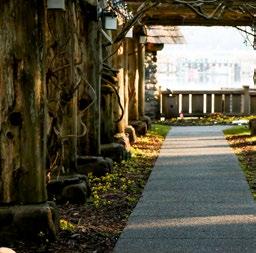

Preserve existing community buildings and invest proactively to prevent deterioration.

1
2
Create and publicize the reinvestment and maintenance schedule for public buildings in the vicinity of Hollice T. Williams Park (such as the E.S. Cobb Center, etc.) so the community can see that the City is proactively preventing the decline of buildings with cultural significance.
Create a public grant or loan program to support business owners in preserving, updating, and growing their businesses, properties, and buildings.
Who would implement?
Public Sector
3
4
Outreach to businesses, property owners, developers, and other public agencies who are interested in renovating community anchors (such as the H&O Cafe, Spencer Bibbs Center, Oliver’s Flowers, the Ice House, etc.); support owners with the application process and connect them to additional funding with matching requirements.
Work with important community organizations and anchors, such as youth athletic programs, to make improvements to the public parks where programming occurs; look for creative projects that will serve the needs of the community, such as creating space for children to do homework after school.
Public/ Private Sector
Public/ Private Sector
Public Sector
Create jobs and provide opportunities for wealth building for local residents.
1 The City expects developers to follow the City’s Covenant for the Community. In particular, projects within a 1/2 mile of Hollice T. Williams Park that are seeking public funding or approvals should hire local residents and M/W/DBE companies to participate in the construction or operations of new development, exceed Section 3 program requirements for any projects receiving state or federal funding, or develop an internal workforce development program that trains residents and connects them to current and future opportunities.
2
3
Establish a monthly market or regular series of events to provide an opportunity for local vendors to sell their products; build spaces into the park to easily facilitate these types of events (kiosks, multi-use structures, power, lighting, shade, etc.).
Invest in building permanent structures/kiosks, or temporary elements with the basic amenities (water/power) that will provide an opportunity for local vendors to share their goods on a regular basis.


Who would implement?
Public Sector
Public Sector

Require positive impact(s) from development projects in the adjacent community or communities.
1
2

3
Developers may demonstrate positive impact through the creation of jobs, leasing space to entrepreneurs and local businesses at an affordable rate, programming the building with neighborhood-serving uses, including affordable housing into their development, or other creative strategies.
Develop a minority developer mentorship program that includes an annual training program and a program that pairs experienced developers with access to capital with minority developers or individuals with an interest in development to grow the pool and capacity of the development community in Pensacola; offer funding opportunities for alumni of the program.
Connect small businesses that serve the local market with neighborhoodserving retail (corner markets with fresh food, ice cream shop, diners and restaurants, etc.) to resources, funding opportunities, and developers with lease-able space.

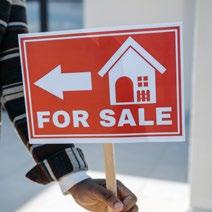
Public/Private Sector
Address and monitor environment impacts of the highway to minimize negative effects.
How could this be accomplished?
1
2
Invest in and install mitigation elements such as plants/trees with natural purifying functions (pines and cypresses, silver birch, yew, and elder trees) or noise barriers that can reduce the impact of the highway on users of the park and residents of surrounding neighborhoods.
Invest in ongoing environment monitoring in the park and several blocks in to the neighborhood to determine the environmental impacts of the highway and to track the effectiveness of mitigation strategies. Public Sector
Ensure stormwater projects don’t have negative effects on the immediately-adjacent community.
How this could be accomplished?
1
Design the stormwater management within Hollice T. Williams Park project to have a positive impact not only on the overall region, but to ensure that there is no negative impact on the immediately-surrounding blocks and neighborhoods.

2
3
Design and execute an education campaign including messaging, materials, and meetings to explain how flooding mitigation improvements will not exacerbate existing flooding; materials should be communicated simply, with diagrams and animations to make sure all residents understand that they will not be negatively impacted and how the system will work. Public Sector
Developers within the 1/2-mile radius who incorporate low-impact development strategies and demonstrate that the project will not have negative downstream impacts may utilize stormwater credits from the Hollice T. Williams Stormwater Park. Private Sector

Develop and fund a long-term maintenance plan for the park that is sustainable.
How could this be accomplished?
1 Dedicate sufficient and sustainable funding for maintenance, safety, and lighting within the park so that the new park remains an asset in the community that will uphold and bolster surrounding property values and act as a safe, clean place for residents to recreate and enjoy.
2
3
4
Create a caretaker or ambassador program with a higher level of operating partner to maintain and manage park amenities and programs.
Create a corporate philanthropic program that could help reduce fees for low-income vendors and contribute to an Operation and Maintenance Fund.
Organize non-profits and local volunteer groups that help raise funds for special programming in the park, supplement by cleaning up litter, and adopt the park as a place that private citizens care about and take care of.


Who would implement?
Public Sector
Public Sector
Public Sector
Private Sector
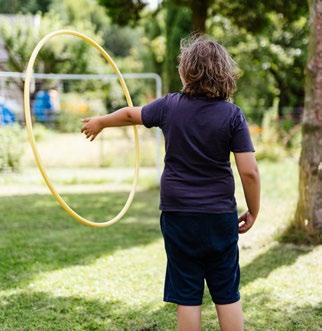

Create new affordable housing.
How could this be accomplished?
1 Build mixed-income and affordable rental housing that is attainable for the residents of the surrounding neighborhoods; provide public incentives to help close gaps and upgrade infrastructure.
2
3
Partner to build affordable for-sale infill housing in vicinity of the park; provide first-time homebuyer incentives and work with non-profits to close funding gaps to increase the number of homes that can be brought on-line each year.
Acquire land with public funds and solicit development partners through RFP processes for affordable housing, with the goal that the housing should be affordable to the average income of families in the immediate neighborhood.
Who would implement?
Public/ Private Sector
Public/ Non-Profit Sector


Public Sector

Provide support to existing long-term homeowners so they can remain in their homes and realize increased values.
How could this be accomplished?
1

Explore tax additional incentives for long-term homeowners and educate and support residents in applying for Pensacola’s Save Our Homes homestead classification, which limits annual property tax increase to 3%.
Who would implement?
2 Create a robust outreach and information campaign to educate homeowners about available funding programs for home improvements Public Sector
3 Partner to increase the funding available for residential property improvements (with foundations, other sources of public funding, affordable housing trust funds, bonds, etc.)
4
Expand pro-bono legal & estate planning services to ensure residents have clear title documentation so wealth can be passed between generations.
Support and stabilize existing rental housing to prevent displacement.
How could this be accomplished?
1 Apply the City of Pensacola’s Residential Anti-Displacement and Relocation Policy (which applies to all activities undertaken through the uses of CDBG, HOME, and other federal funding), and expand it to apply to all projects in the 1/2-mile radius of Hollice T. Williams park seeking public funding or approvals.
2 Tie financial incentives for improvements to owners’ and developers’ cooperation in keeping rents affordable and preventing displacement within the neighborhoods surrounding Hollice T. Williams Park.
3 Use public funds to purchase affordable properties whose affordability is expiring in the coming 5 years and partner to re-syndicate and preserve affordability.
Public/ Non-Profit Sector
Public/ Non-Profit Sector
Who would implement?
Public/ Private Sector
Public Sector
Include community members in the decision-making process.
How could this be accomplished?
1
2
Support the formation and capacity building of strong neighborhood associations; share regular updates about consequential projects happening within the vicinity of the park with the relevant neighborhood associations; hold developers accountable for coordinating with the neighborhood associations for support.
Developers who meet with, present to, and seek letters of recommendation from the relevant neighborhood associations impacted by their projects will receive higher priority when applying to the City/CRA for any funding, entitlements, or approvals.

would implement?
3
The City will commit to increased communication about project updates by scheduling regular meetings with the relevant neighborhood associations.
Demonstrate familiarity and responsiveness to existing community plans.
How could this be accomplished?
1

Developers working within 1/2 mile of Hollice T. Williams park seeking public funding or approvals must demonstrate that proposals comply with the CRA plans and/or the Equitable Development Framework Plan principles.


This Equitable Development Framework Plan defined the high-level values and principles that should guide design of the Hollice T. Williams Stormwater Park and public and private projects within a 1/2-mile radius of the park. However, additional details will be needed to adopt specific policies and funding incentives to accomplish these values and principles.
The next step should be to commission a more detailed set of recommendations, supported by a consensus negotiation process that involves elected and appointed officials, community leaders, and other key stakeholders. A Step 2 document should outline the policies that the City is committed to putting in place to ensure that negative impacts (like increasing rents and home prices) are minimized and development is inclusive to everyone, especially long-time residents and businesses.
